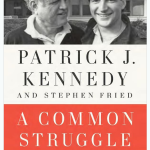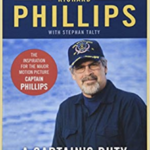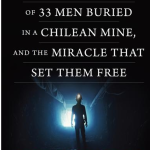December 25th, 2014 — 5:52pm
Unbroken by Laura Hillenbrand– I read this book and wrote this review prior to seeing the movie by the same name. I do plan to see it and will review it in FilmRap.net. (click here to see review)
(click here to see review)
Louie Zampereini was an Italian-American boy from a poor family who was raised in Torrance, California. He was a rough and tumble kid who had a propensity for stealing things and getting into trouble. He was fast on his feet and ultimately developed into a record breaking track star who participated in the 1936 Olympics in Berlin, Germany. When World War II came about he signed up for the Army Air Force and became a bombardier. Early in the war his plane on a mission crash-landed in the Pacific Ocean where he and two other airman survived in rafts for 47 days as they drifted 2000 miles. During this time they battled starvation, dehydration, hungry sharks and storms as well as Japanese planes that strafed them with machinegun fire. If you think this was bad you should see what happened after they were rescued at sea…by the Japanese and made prisoners of war (although they were never treated according to the Geneva Convention rules for POWs). We see how things were absolutely terrible and how demeaning the treatment of American Prisoners was, ironically clearly much worse than the German Nazis reportedly dealt with their American captives. Louis was apparently treated much more savagely once he was recognized as an Olympic track star.
Being a member of the Silent Generation and having come of age in the decade following WWII, I grew up as a kid reading all sorts of stories and seeing all the movies about this war. Even now as an older guy I am still drawn to a book such as this one. I am sorry to say that reading about the awful treatment by the Japanese of the helpless American prisoners, my old negative prejudiced feelings about the Japanese people were awakened. I know these are irrational and are related to issues from a previous generation. Although a few kind guards were mentioned, there clearly was, at that time, an institutionalized culture of cruel, vicious treatment of the Americans who were starved, tortured and made to do slave labor. We see these atrocities through the eyes of Zamperini who was officially considered dead by his government although his family seemed to have never given up hope for him. We trace his ordeal as he is moved to various prison camps and was never registered with the Red Cross as a POW although that was the usual procedure mostly followed by the Japanese who nevertheless hid their maltreatment of their captives.
The book does not end with his liberation at the end of the war. It follows Zamperini’s reintegration into civilization and his seeming resilience but also his very dark and destructive periods, which were almost as bad as you can imagine. The author Laura Hillenbrand, who previously wrote the best seller Seabiscuit had access to diaries, newspaper articles, radio and television interviews and a gigantic trove of people to interview who knew Zamperini in the various phases of his life including those who were imprisoned with him and close family members. She also had the opportunity to interview Zamperini himself more than 75 times and became quite close to him before he died in July of 2014 at the age of 97.
At times the book seems overly repetitious. Perhaps it felt that way because it was so painful. I am not giving away the ending because the title clearly does that but this book is also about the human spirit. As an outsider who didn’t live through his ordeal and didn’t live through this time as an adult, I can only try to get into Louis’ head through this book. When we try to do this, there is a tendency for us to be traumatized. At one point in the book we learn that recently there was a commemorative memorial made by the local Japanese people at the site of one of the camps at which Zamperini spent much of his time. It honored and remembered the prisoners who were there, many of them who had died there. We are also told that there are pictures of six birds flying in the sky as symbols of the memory for 6 of the prison guards who were tried as war criminals and executed! On the day that I am writing this review there is a front page article in the New York Times that discusses the current Japanese Prime Minister Abe and his hope to bring about a change in the Japanese constitution which was written post war by the Americans and forbids Japan from ever going to war again. Time marches on.
1 comment » | B - Biography, HI - History
December 22nd, 2014 — 4:50pm
My Promised Land by Ari Shavit
If you have any familiarity with the politics of the Middle East and the establishment of the state of Israel you know it is a very complicated story. Ari Shavit is an Israeli who cares deeply about the future of his beloved homeland. He has written what appears to me to be a definitive comprehensive book about the history of modern Israel. In the course of writing this book, he has done extensive research and has interviewed hundreds of people, many who have been key players in the amazing story of Israel. Shavit is a well-established journalist who personally knows many of these people. Others agreed to meet with him apparently because of his good reputation. I am not in a position to judge if he has all his facts straight and if he has given a balanced view. I can only say that it appears that he has tried to understand and present numerous points of view, This has to be a painful book to anyone who has an affinity for Israel and what this country has meant to so many people.
Naturally, Shavit covers the story of the European Jews who escaped annihilation from the Holocaust and how many of them with literally the shirts on their back built kibbutzim, moshavim, new cities, orange groves and so much more. The transformation from scorched dessert into fertile farms while on the surface is a magical story but is one of tremendous work and dedication. Similarly the development of Tel Aviv into one of the great cities of the world seems like a fairy tale but in reality reflects the courage and the personality of the people who came to Israel.
The spirit and the work ethic of the people who made up the Zionist movement is not the only story of Israel. There is also a narrative of continued bloodshed, conflicts, ethical dilemmas and an uncertainty about the future. The 1948 declaration of a State of Israel by the United Nations was followed by an attack by the surrounding Arab countries, which is a well known important piece of history. As are the 1967 War and the 1973 Yom Kipper War. The details and the meanings behind these wars are discussed in great detail in this book. Shavit doesn’t stop there; he examines and discusses the displaced natives of Palestine and other parts of Israel where many Arabs have lost their homes. While many Arabs do live in harmony in what is now Israel, it clear that many live for the day that they can regain what they feel is rightfully their land. Then there is the situation of the Jewish settlements on the Palestine west bank. On one hand, this is viewed as undermining the one just possibility for a two state solution that might lead to long lasting peace. On the other hand, there is also the point of view of the settlers which they present as a moral and deep seated justification for what they are doing.
There is the story of the Sephardic Jews in Israel, many of whom have felt greatly discriminated against. As with each issue the author brings to life the point of view of the protagonists by not only reviewing factual historical events but also by telling compelling personal stories of the people involved.
Perhaps one of the most important subplots of the story of Israel is a secret chapter that cannot be officially told. On the other hand it is well known and documented by Shavit. In this case he does this by using mostly non-Israeli and certainly non-official sources. This is the fascinating tale but certainly true story of the development of the city of Dimona, which is where Israel mobilized it’s human resources, with some help from France, to develop nuclear weapons. While this unacknowledged fact is stated with great certainty, Israel has never overtly used this as a threat but it nevertheless has been essential for the survival of Israel.
If Dimona were the big secret that I heard about before reading this book, the discussion of the magnitude of threat to Israel from Iran was something that I never fully appreciated. The author in his meticulous style reviews the response of Israel to each step that Iran has made to develop their own nuclear weapon capacity. This includes a daring secret air attack by Israel in 1981 which demolished Iran’s nuclear plants, which were on the verge of producing weapon grade nuclear material. This leads us to the present and one of the major dilemmas that Israel faces today. Once again Iran, a country that has sworn to destroy Israel, is approaching the ability of developing nuclear weapons.
I hope I have made the point that Ari Shavit has written an amazing book that has vividly described in depth so many of the historical events that have allowed Israel to develop and flourish, as well as the issues that question Israel’s viability to survive in the future as it exists today.
Comment » | HI - History, P - Political
 (click here to see review)
(click here to see review)













